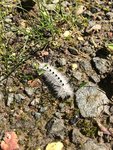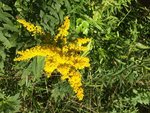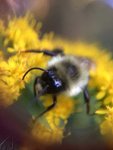 Narrowsburg
NarrowsburgLight Rain Fog/Mist, 43°
Wind: 8.1 mph
 Narrowsburg
NarrowsburgWhen it comes to our knowledge of the natural world, what we don’t know (or what we have been misinformed about via social media or exaggerated claims often fueled by fear) can cause harm. …
Stay informed about your community and support local independent journalism.
Subscribe to The River Reporter today. click here
This item is available in full to subscribers.
Please log in to continue |



When it comes to our knowledge of the natural world, what we don’t know (or what we have been misinformed about via social media or exaggerated claims often fueled by fear) can cause harm. These misunderstandings sometimes lead to unfortunate outcomes for the targeted species.
One example I frequently cite is the porcupine, a quite benign creature which cannot, in fact, “throw” its quills, and poses little threat to anyone standing a few feet away (at most, a threatened porcupine will thrash its tail toward the potential predator). Should your dog attempt to “sample” this slow waddling forest mammal, the canine may indeed end up with a muzzle or mouthful of quills.
Two other species—an insect and a plant—are unfairly targeted at this time of year. Take a few moments to familiarize yourself with each and to share your knowledge with others.
The white hickory tussock moth caterpillar is commonly seen in the Upper Delaware River region. Characterized by spikey white and black tufts, this attractive caterpillar has become victimized by alarming headlines warning of their “poisonous” and “toxic” characteristics.
The caterpillar has several long black hairs at front and rear which secrete venom on contact. An allergic reaction is possible. For most people, symptoms of mild burning or redness may occur, along with a rash similar to that caused by contact with poison ivy. Highly sensitive people may experience nausea or swelling. Most symptoms improve with soap and water, calamine lotion, antihistamines, or an ice pack.
How to protect yourself? Simply don’t handle one. Enjoy observing this species without touching it and all will be well.
There’s no need to protect oneself from the gorgeous glow of goldenrod flowers brightening our local landscape now. While frequently maligned for our misperception that goldenrod is causing our seasonal allergies to flare, the plant behind this unpleasantness is actually ragweed, a toothy-leaved plain green plant that often goes unnoticed. Leave the goldenrod alone, as it provides an essential resource for pollinator insects such as bees and butterflies at this time of year when othering flowering plants have faded away.
Knowledge is empowering. Learn all you can about honeybees at the upcoming Honey Bee Fest on September 23 in Narrowsburg, New York (www.narrowsburghoneybeefest.com).
Comments
No comments on this item Please log in to comment by clicking here